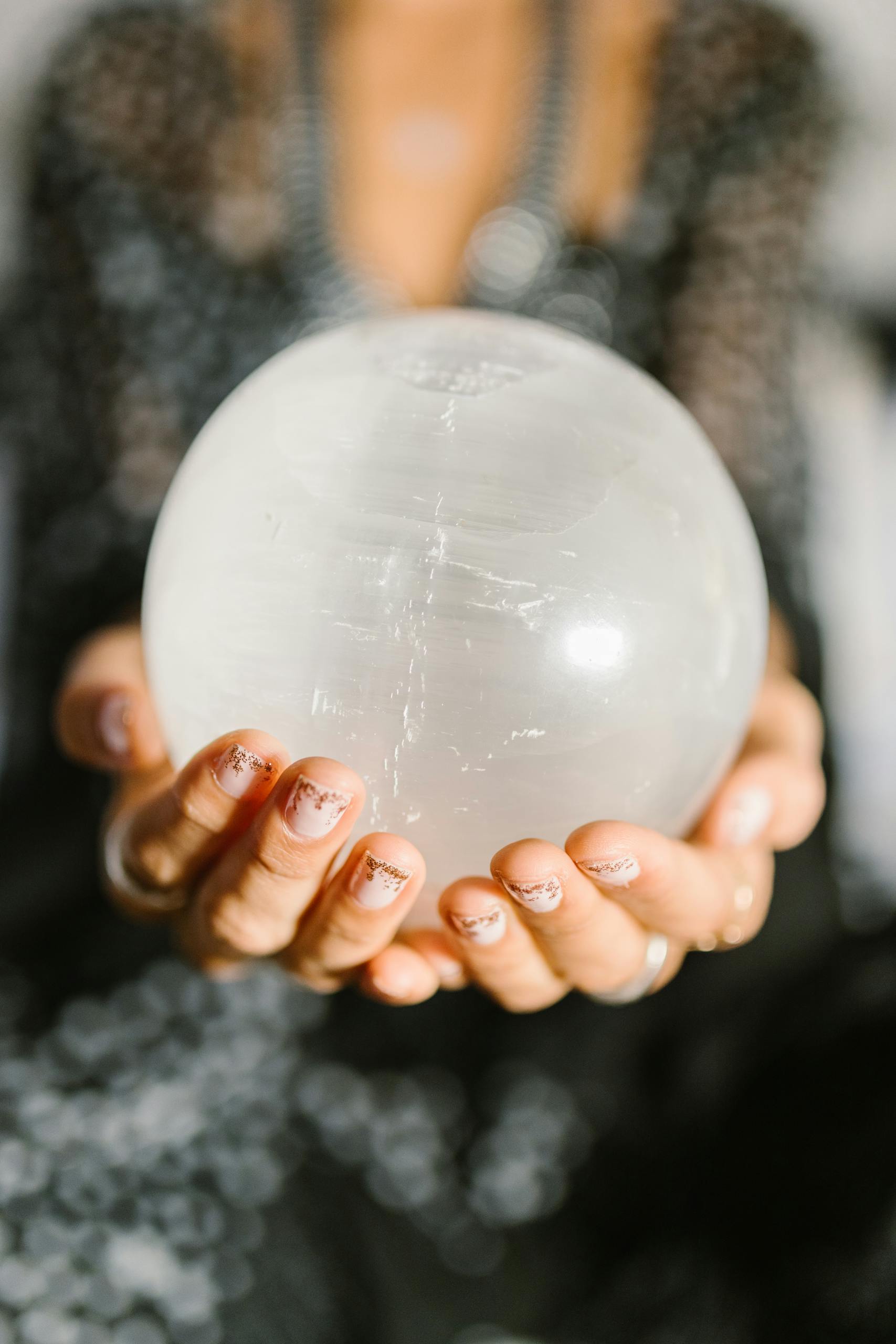The Art of Divination: Exploring Tarot and More
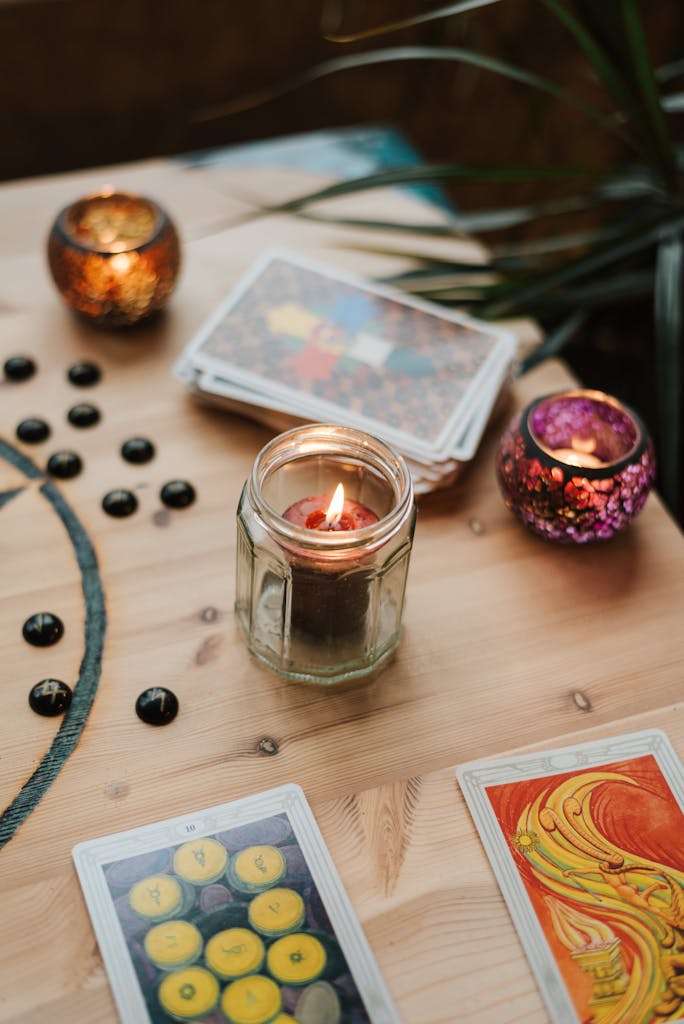
Let’s explore the art of divination a bit. When I think back a few decades, I recall sitting in the middle of my bed with my three teen-aged daughters gathered around. We took turns reading the tarot for each, answering their questions and opening up avenues for discussion that I hadn’t thought possible with the normally standoffish teen generation. Now as recently as this very week, I’ve been blessed to do the same with my grandchildren. For our family, tarot has become a tool to create a relaxed, open atmosphere for talking about life’s challenges. And, truth-be-told, that continues to be my primary inspiration to deepen my tarot studies today. But Tarot was around long before my children, grandchildren, and I discovered it.
Table of contents
For millennia, humans have been fascinated with the art of divination. The idea of peeking into the future to uncover hidden truths is intriguing. This curiosity led to the development of many, many methods of divination. As spiritual tools these different methods tell a story of human nature and the quest for knowledge. In this post we’ll explore some of the most intriguing types of divination practiced around the world. In later posts, I’ll get more in-depth on the study and details of each. Let’s begin!
1. The Art of Astrology
Astrology is arguably the most widespread and well-known form of divination. Almost everyone knows what their sun sign is, and most know at least a few attributes of their sign. Astrology seeks insights or understanding about current situations or the future through symbolic interpretation of celestial bodies.
Astrologers can use birth charts (known as natal charts), which is a map of where the celestial bodies were positioned at the exact moment of a person’s birth. Each planet and its placement in the various houses and signs are interpreted to gain insights into a person’s personality, strengths, challenges, and life path. From there they determine the transits and progressions. These methods involve tracking the movement of planets after the moment of birth and predicting how these movements will affect a person’s life. Transits are the current positions of planets and how they relate to the positions in one’s natal chart. Progressions involve a symbolic moving forward of the natal chart to see how a person’s life might evolve.
From Western astrology, which focuses on the horoscope and zodiac signs, to Vedic astrology, which has roots in ancient India, the interpretations are vast and varied. There are other types of astrology as well. Synastry and Composite Charts determine how two birth charts would intermingle together. Election Astrology is used for determining the outcome of important events. And, Horary Astrology, involves casting a chart for the exact time a question is asked to find insights or answers. It is focused on yes/no questions or finding details about a situation at hand.
Astrology’s effectiveness in divination is often subjective, and interpretations can vary widely. It is important to approach it with an understanding of its symbolic and interpretative nature, rather than expecting definitive scientific predictions.
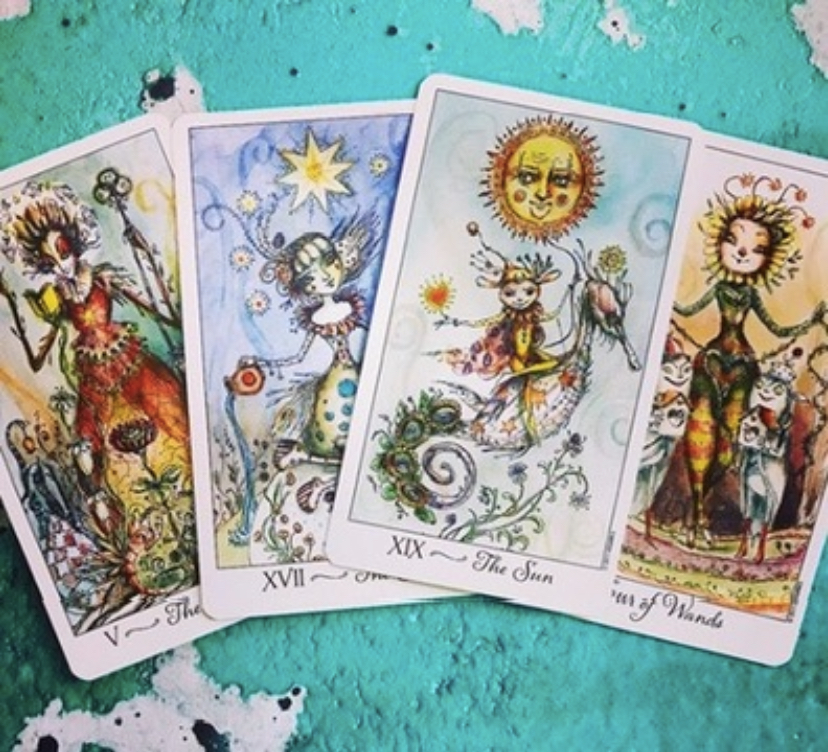
2. Tarot Reading
With its origins in the 15th century, Tarot reading involves a deck of 78 cards, each with symbolic imagery representing different aspects of life and psyche. “Pip” decks, however, only have imagery on the four face cards of each suit and the Major Arcana cards. With either type of deck, readers interpret different layouts of the cards drawn by the querent, offering insights and advice on personal challenges, relationships, and spiritual growth.
Some Tarot readers use the generally accepted meanings of each card, regardless of which deck they use. Others, like me, use a method of “intuitive” tarot reading. This means we use the imagery on each card to spark words or pictures in our minds which then give us a deeper interpretation of the card. The interpretation of one deck might be different than the next, as is the case for me. Generally, I allow the person asking the questions to choose which deck we will use for their reading. My all-time favorite decks are the Shadowland Tarot, and The Joie De Vivre Taro.
3. Numerology
Numerology is the belief in the mystical significance of numbers. Each number is said to vibrate at its own unique frequency and thus influence the characteristics and life events of individuals. The practice involves assigning numerical values to letters and words to derive meanings and insights. There are destiny numbers, soul numbers, personality numbers, and many other types of numerology numbers. But for all, the number itself has meaning.
The Life Path Number is one of the most important numbers in numerology and is calculated based on a person’s birth date. By reducing the birth date to a single digit or a master number (11, 22, 33), numerologists interpret the characteristics and destiny associated with that number. For example, the number 7 is often associated with introspection and spiritual awakening, whereas the number 4 symbolizes stability and practicality. I’m an 11–which is considered a master number. This means that it carries a heightened level of spiritual significance and a unique vibration. (Some say it’s like a cosmic door that opens to spiritual awareness and inner wisdom.) Other master numbers are 22 and 33.
The Soul Urge number, also known as the Heart’s Desire number, it is calculated from the vowels in a person’s full name. This number reveals inner motivations and desires of an individual. The Personality Number, calculated from the consonants in a person’s name, provides insight into how others perceive you. There are also many other ways to use and interpret numbers as they pertain to your life, actions, and name.
4. I Ching
Originating from ancient China, the I Ching or Book of Changes is a compendium of wisdom used for divination. By casting yarrow sticks or coins, you generate a hexagram, which you then compare to those listed in the interpretation guide book. (Alternatively, we have asked questions and opened the guide book at random, as describe in Bibliomancy below.) The I Ching guides decision-making and self-reflection through its collection of philosophical insights.
5. Runes or Ogham Letters
Those interested in Norse Mythology are often familiar with Runes. Runes are characters from ancient alphabets used predominantly by Germanic tribes and they are considered to be symbols of some of the most powerful forces in the cosmos. In fact, the word “rune” and its derivatives mean both “letter” and “secret or mystery.” A typical rune set consists of 24 stones, pieces of wood, or other materials, each inscribed with one of the characters from the runic alphabet. The most commonly used is the Elder Futhark, which has 24 runes.
Like with other forms of divination, setting the right environment is important. This can include creating a quiet space, focusing your mind, and sometimes a ritual to center your thoughts before you begin. Before drawing runes, you might want to focus on a specific question or situation you want guidance on. Clarity of intent helps in interpreting the runes’ meanings.
There are different methods for drawing runes, such as drawing a single rune for a quick insight, three runes for past, present, and future, or creating a more elaborate spread. Some people draw the runes from a bag, while others mix them on a cloth and pick intuitively. Each rune has its own meaning, and interpretation is critical. Runes can represent various concepts, including specific situations, feelings, or archetypal forces. Interpreting runes often involves understanding the complex symbolic meanings associated with each rune and applying this understanding to the querent’s question.
In more complex readings, the position of each rune within a layout, or spread, can add layers to the interpretation. Different positions might mean different things, such as challenges, opportunities, or the “advice” provided by the runes. Some practitioners incorporate reversed runes (upside down) into their interpretations, adding additional meanings or emphasizing certain energies or blocks.
Many like to document their rune readings in a journal, reflecting on the symbols drawn and the insights gained over time. It’s worth noting that runes are a tool for introspection and insight, not for predicting the future with certainty. Different practitioners may have personal variations or methods, and interpretations can be deeply influenced by personal intuition and understanding of the runes’ meanings.
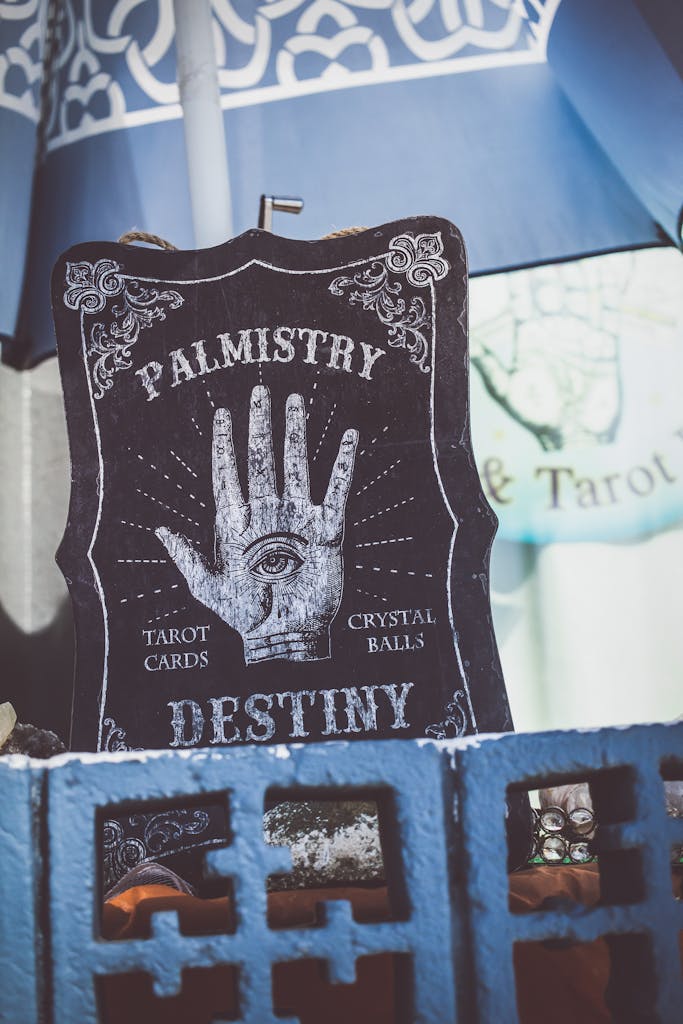
6. Palmistry
The art of Palmistry or Chiromancy involves reading the lines, shapes, and mounts on an individual’s palm to reveal aspects of their personality and life path. Whether focusing on the “heart line” to gain insights about emotional life, or the “life line” to understand vitality and life journey, palmistry offers intriguing perspectives. If you are familiar with the Outlander series, you know what types of mysteries Claire found in her palm. I, myself, have wrinkly old-lady palms with an excessive number of lines. I always have. Some palm readers have told me it’s because I have lived many lives before this one. Others have told me I’ve come with knowledge to share, which is interesting, because I’ve always wanted to be a teacher, and, in fact, I’ve repeatedly found myself in various teaching roles throughout my life. They may even be what brought me here; it was predestined!
7. Crystal Ball Gazing and Scrying
Also known as scrying, Crystal Ball Gazing is a form of divination that involves staring into a reflective surface. The most commonly known method is using a crystal ball. Traditional scrying mediums can also include reflective surfaces such as a bowl of water, a black mirror, or even the surface of a lake. Some scry into fire, smoke, or clear skies. The key is to use a medium that allows you to enter a meditative and receptive state. Practitioners of scrying enter a deep meditative state, allowing images or symbols to appear, which guide their interpretations.
Once a medium is chosen, gaze softly into your chosen medium. You’re not actively looking for specific images; rather, you allow your eyes to relax and defocus. It’s important to maintain a gentle focus and stay open to any impressions, feelings, or images that arise. As you continue to gaze, you may enter a trance-like state where the conscious mind is subdued, and intuition can flow more freely. This state is sometimes facilitated by the practice of repeating a mantra or by rhythmic self-hypnosis. While in this state, you might perceive symbols, scenes, or even receive auditory impressions. Allow these visions or impressions to flow without trying to analyze them immediately.
Scrying results are highly subjective and open to personal interpretation. Reflect on the symbols or impressions and consider how they might relate to your current life situation, questions, or concerns. Often, context and intuition are used to interpret what has been perceived. Many who practice scrying emphasize that patience and regular practice are important to improve one’s ability to receive clear and meaningful insights. Respecting the process and approaching it with an open mind can help foster a conducive environment for divination.
8. Tea Leaf Reading
Tea Leaf Reading or Tasseography involves interpreting the patterns and shapes left by tea leaves in a cup. Loose leaf tea is used, as opposed to tea bags. Tea leaves in the bags are too small to create distinct patterns, even if you break them open. Black tea or any other kind of loose-leaf tea can work.
Brew a cup of tea, leaving enough leaves in the cup. Typically, the tea is poured into a cup without straining, allowing some leaves to settle at the bottom. The person whose fortune is being read should drink nearly all of the tea, leaving a small amount of liquid in the cup along with the leaves. After drinking, the cup is gently swirled three times in a counterclockwise direction. Swirling allows the remaining liquid to spread the leaves around the sides and bottom of the cup. The drinker turns the cup upside down on a saucer to drain any excess liquid, which allows the leaves to stick to the sides of the cup in various patterns. After a moment, the cup is turned right-side up again.
The reader begins interpreting the shapes and patterns of the leaves. Different areas of the cup can represent different things. The rim or top is often interpreted as the present or near future. The middle is used for upcoming events, and the bottom for the distant future or deeper issues. The reader looks for recognizable shapes or symbols in the leaves. Common interpretations include: Hearts for love or relationships. Circles for completion or continuity. Lines for travel or journeys. Animals or specific symbols, such as a snake for caution, a bird for good news, etc. Many contemporary readers also incorporate the personal context and the individual’s intuition or questions when interpreting the readings.
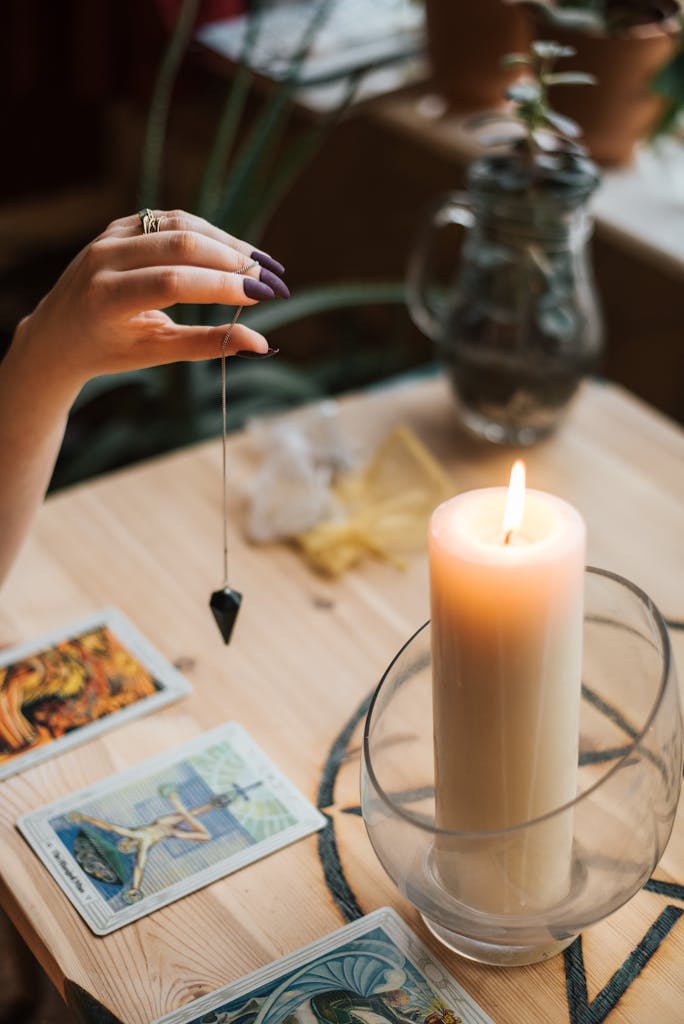
9. Pendulum Divination
In Pendulum Divination, (a favorite of my grandson) a weighted object—a pendulum—is used to answer questions or locate objects. By observing the pendulum’s movements (such as swinging back and forth, in circles, or remaining still), a practitioner can glean answers guided by spiritual forces or the subconscious mind. Some people stick to general interpretations. Others hold the pendulum over a board with pre-written answers, such as “yes,” “no,” the days of the week, etc.
My family has used both effectively. It’s easy to keep a pendulum in your purse to pull out in a pinch when making a decision. Simply hold it up and ask it what is your “yes” and what is your “no”. Let it show you how it will move to designate each, then begin asking your questions! The board is nice for more specific answers, but this simple method is helpful since it’s much harder to fit a board in your purse.
10. Bibliomancy
Bibliomancy, as I mentioned above, involves seeking spiritual or predictive counsel through books, often sacred texts like the iChing. The practice usually entails asking a questions then opening the book to a random page. The asked then analyzes the specific passages on that page for guidance and insight.
11. Favomancy:
Favomancy is a form of divination that involves reading patterns or configurations of beans. This practice has roots in various cultures and traditionally uses beans but can use similar objects to predict future events or gain insights. The process typically involves casting beans and interpreting the patterns they create upon landing. Although not widely practiced today, favomancy is part of a broader category of divination practices that utilize everyday items for fortune-telling. (This can also be done with grains of corn).
12. Ouija boards:
A modern form of divination involves Ouija boards. The board is used for divination or spirit communication in a manner that involves participants attempting to receive messages or answers from the spiritual realm. Typically, two or more people gather around the Ouija board. It’s believed that the group setting helps facilitate communication. The Ouija board is then placed on a flat surface, and a planchette (a small, heart-shaped piece of wood or plastic) is set on top of it. The board contains letters, numbers, and sometimes words like “yes,” “no,” and “goodbye.”
Many practitioners will start the session with a question or an invocation. It is common to ask if there are any spirits present that are willing to communicate. Each participant lightly places one or more fingers on the planchette. The key is to apply just enough pressure to keep contact but not to consciously move it. Participants take turns asking questions to the board, ideally simple and clear ones. Responses may be sought about personal matters, general inquiries, or attempting contact with specific spirits.
Participants watch the planchette, which is believed to move across the board to spell out answers by stopping on letters or indicating “yes/no” as purported messages from spirits. As letters and words begin to form, participants interpret the message. This can sometimes be challenging if the responses are cryptic or incomplete. Once participants feel they’ve received enough information, the session is closed. This can be done by moving the planchette to “goodbye” as a way to politely end the communication.
13. Automatic Writing:
Automatic writing, also known as psychography, is a practice used in divination to connect with subconscious thoughts, spirits, or other supernatural entities to receive information or guidance. People engaging in automatic writing believe that this method allows them to bypass the conscious mind and directly channel information onto paper. Before beginning, the individual typically creates a calm and conducive environment. This might involve dimming the lights, playing soothing music, lighting candles, or burning incense. Practitioners may also meditate to center themselves, clear their mind, and open themselves to receiving messages.
The individual sets a clear intention for the session. They might ask specific questions, seek guidance on an issue, or request communication from a particular spirit or entity. The practitioner usually enters a meditative or trance-like state. This allows them to alter their consciousness, making them more receptive to messages beyond their conscious mind. With pen and paper ready, or sometimes a keyboard, the practitioner starts to write without deliberate control or conscious thought. The goal is to let the hand move freely and to write whatever comes without pause or censorship.
It is about remaining open and non-judgmental, allowing any thoughts, words, or sentences to emerge. The process involves letting go of the desire to control what is being written. Many practitioners aim to achieve a flow state where the writing appears to happen automatically, as if guided by an unseen force.
Ending the session with a thank you to any spirits or energies involved is common, particularly if the session was used to seek spiritual guidance. This helps the practitioner return to their normal state of consciousness and disconnect from the energies they were engaging with. After the session, the written material is reviewed and analyzed. Individuals look for patterns, symbols, or messages within the text.
Interpretation can vary and may require additional reflection or meditation to understand the full context of the received messages. Automatic writing is a subjective and personal experience, with its efficacy and authenticity often depending on the individual’s beliefs and intentions. For some, it may be a powerful tool for introspection and spiritual communication, while for others, it might simply serve as a creative or cathartic exercise. As with any form of divination, it is important to approach it with an open mind while also being critical of the outcomes.
In Conclusion
While some folks rely purely on personal intuition and gut feelings, others root their practices in these ancient traditions and systems of belief. As diverse as human cultures themselves, each form of divination holds unique allure and offers its own pathway to wisdom and understanding.
So which one or ones are for you? The only way to find out is to explore these fascinating methods, discover what resonates with you, and perhaps you’ll uncover new ways to understand your past, present, and future.

